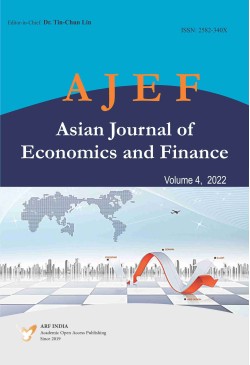
Asian Journal of Economics and Finance
Frequency :Quarterly
ISSN :2582-340X
Peer Reviewed Journal
Financial Accelerator and Bank Excess Liquidity in CEMAC Zone
Considering Corruption, Inflation, Infrastructure and Trade to Explain Foreign Direct Investment Inflows in India Post Liberalization
This paper considers corruption, inflation, infrastructure and trade to fit models to explain the inflow of foreign direct investment in India post liberalization. For this purpose, data from 1995 to 2019 is used considering the consistent availability of data for all the variables during this period. Timeseries regression is performed on standardized independent variables to control for multicollinearity. Two models are estimatedone having a doublelog form and one without converting the explanatory variables into logarithms.It is found that corruption is signifi cant at 5% significance level in both the models. Trade is significant at 10% significance level in the doublelog model while it is insignificant in the other model. Also, infrastructural variables i.e. energy and transportation are both insignificant in doublelog model while energy is significant and transport is insignificant in the other model. Consumer price index is used in place of inflation as it does not make sense to convert inflation rate into logarithm. Itis found to be insignificant in both the models.
Keywords: Foreign direct investment, corruption, timeseries regression, trade
JEL Classification: C32, F21, F23
The Determinants of Bank Profitability: Case of Tunisia
Financial Development and Tax Revenue in Tanzania: Analyze the Impact of Financial Depth on Tax Revenue
Causal link between Export, Import, Remittance and Economic Growth in Bangladesh